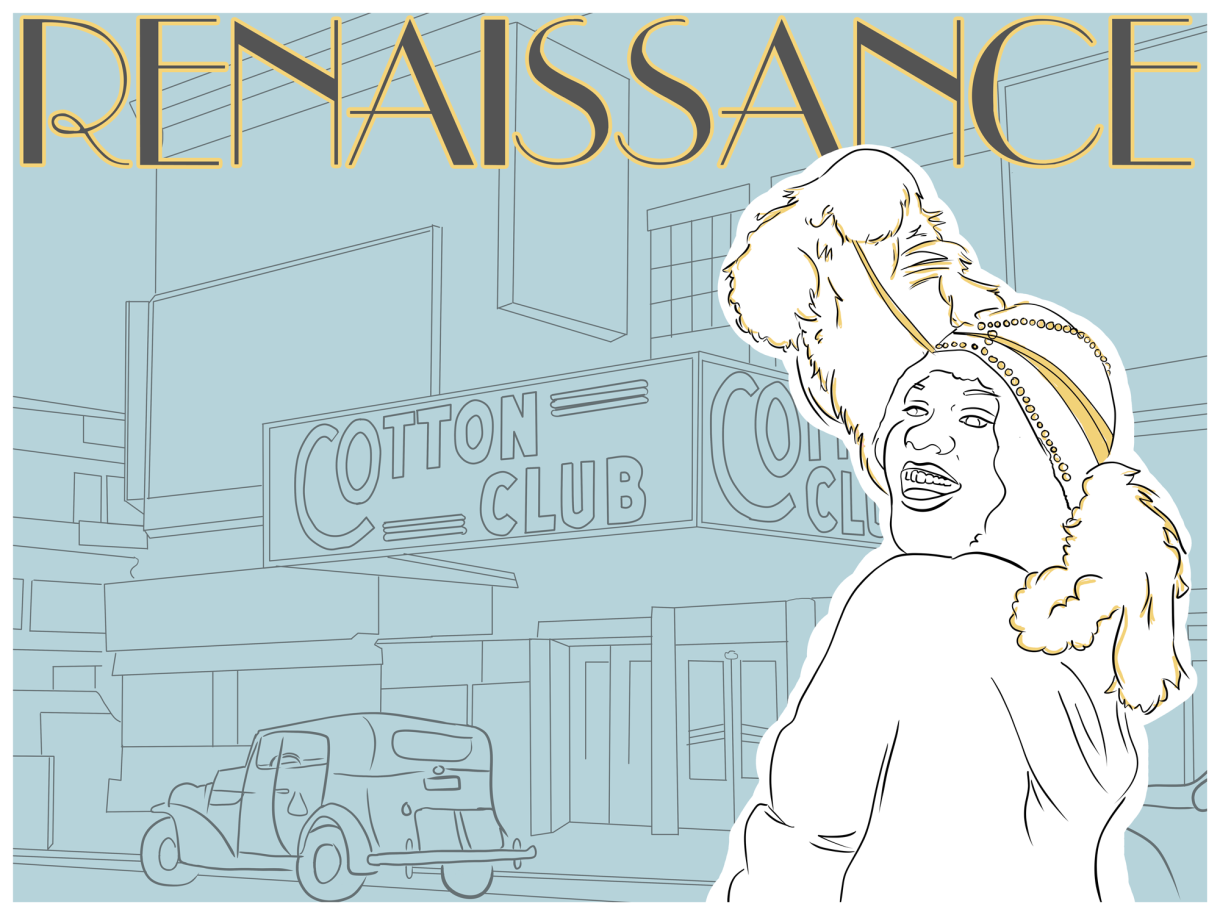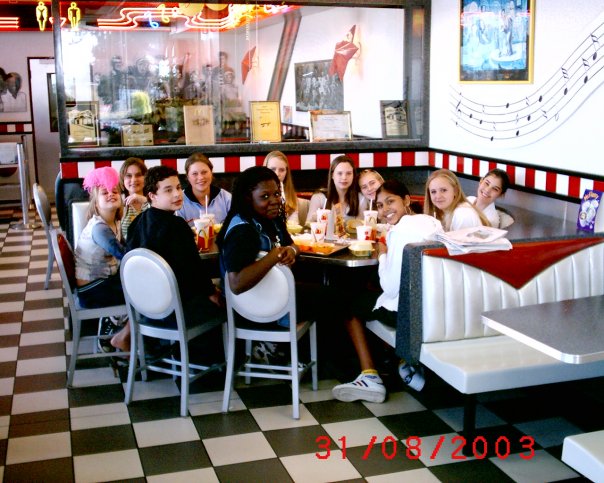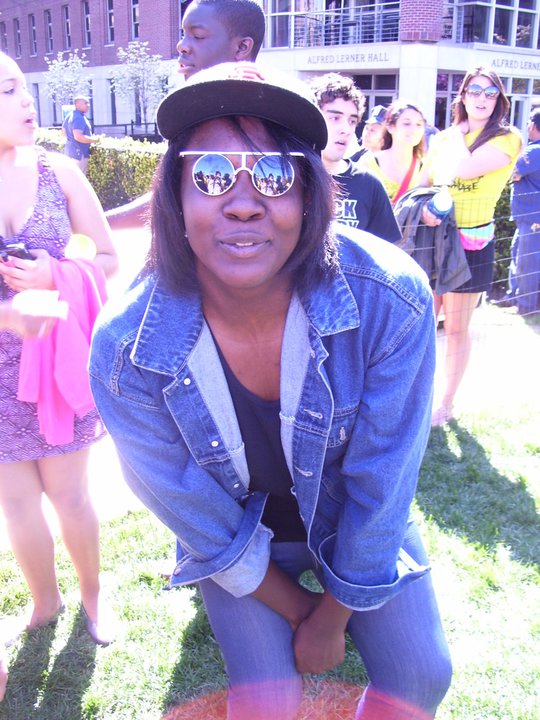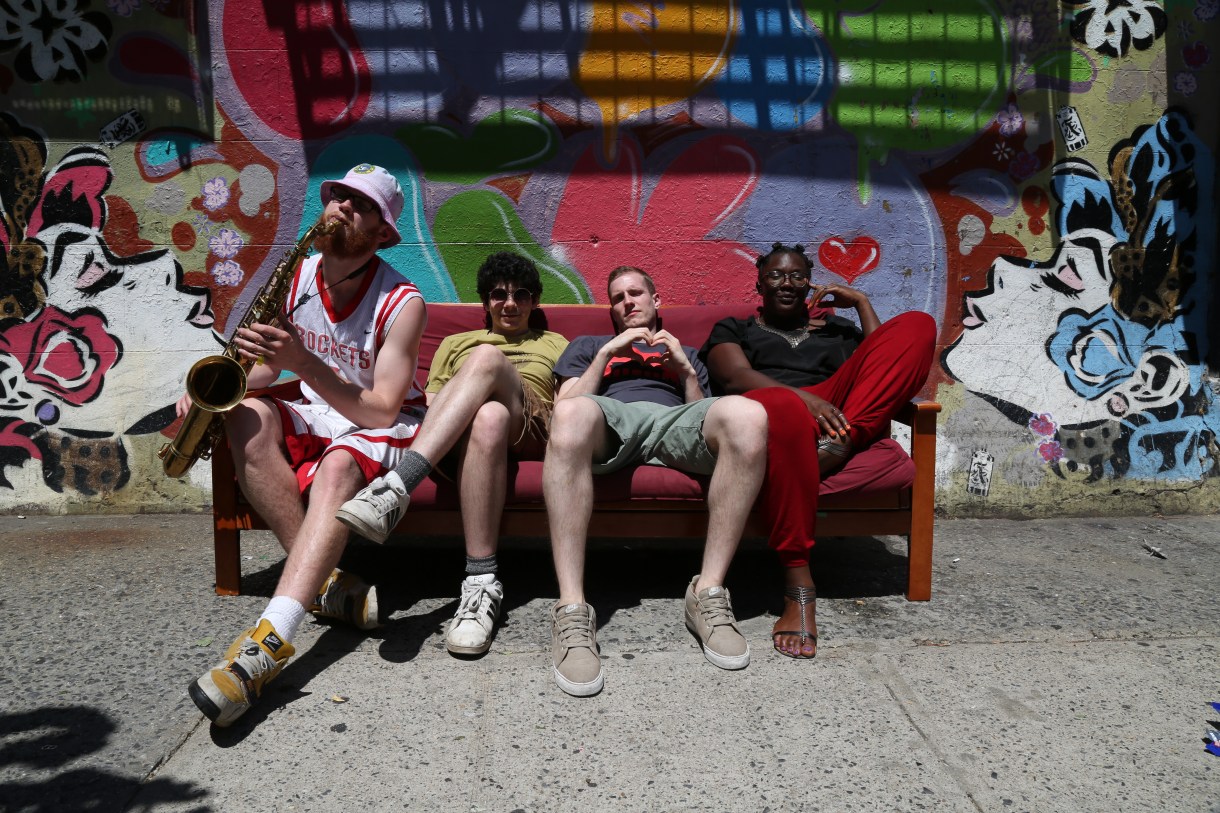
By Abeni Jones
Many of us don’t yet have words for Beyoncé’s recent performance at the Grammys because… language has yet to catch up with her. But do you remember how, in Cranes in the Sky, Solange danced like a gold, shimmering bird? Remember how it felt to watch the last few scenes in Moonlight? How you were buzzing? Whether it’s the blues or a flash, there is this tradition of alchemy in African American culture. Using art to turn suffering to light. In honor of Black History Month, we are featuring personal essays as part of the Renaissance series. Each essay will describe how one queer black life has been saved by art. In the name of healing, wholeness and resistance, we hope you enjoy!
I’ll never forget the first time I saw Grace Jones’ 1981 Nightclubbing album cover, shot by Jean-Paul Goude. While deep in a Google Image hole, searching for “black women cool art” in hopes of a new wallpaper, I came across this angular god(dess?) that defied convention. She was as severe as she was soft, enticing as she was enigmatic. Who was this sculpture of a woman? Ebony skin was still something I was working on being proud of, and the smooth, unbroken contour of hers made me sit up a little straighter. I fell in love.
I have always felt a little unconventional in my womanhood. I have been six feet tall since I was 14, and while that is celebrated when it is waifish, it is shunned when it is strong. I didn’t have the model body to accompany the height, and I was made well aware of that by my peers. I was strong, with broad shoulders and runner’s legs, and my height and my size did not mesh well with the womanhood that was in demand at my majority-white, privileged and private international school. I was an African American, black girl – I say that to clarify that my skin is as chocolatey as the day is long, which mattered in a post-Apartheid Johannesburg. Against all odds, the standard for beauty in the African metropolis was resolutely white and thin. Think Laguna Beach with accents and better highlights. Having arrived at the tender age of 8, I quickly realized that my parent’s Back to Africa™ aspirations somehow fell short of what was promised. Less Kente, more Kenzo, you know? South Africa, at the time, was charging through the post-sanction economic boom and expats were arriving by the dozens. Burgeoning black elite started to make itself known, and my parents chose this moment to build. I found myself in a private elementary, then high school, running through the streets with the children of wealthy politicians, public figures, Apartheid heroes and the occasional diamond smuggler. We moved with a freedom that I haven’t felt since, hidden away from the truth of a post-Apartheid country by strong fences and a stronger oligarchy. I had no idea at the time, but I did know – even then – that I was different.

This is me, at a birthday party in South Africa, in seventh grade. Note the awkward grimace.
Puberty came and went with little fanfare. Mostly it meant buying a lot of new pants. I was now a teenaged black American girl, with Midwestern parents, somehow responsible for being the only cultural ambassador for #blackgirlmagic other than Beyonce. Needless to say, the stakes were high. I wanted to be ethereal in my blackness, and yet so tragically feminine that I was somehow anything but. That manifested in an aggressive dieting campaign and four years of Resting Bitch Face. I had always felt that I didn’t belong, bolstered by my mother’s reassurance that I would move back to America and find a man for whom I would be a “cupcake.” For now, though, with my deep brown skin and raspy voice, I was basically LeBron James in this bih.
I was in love, at the time, with my German “bff”, who I followed around and desperately soothed while he pined over some 5 foot Kardashian type. I bade my time, thinking that eventually he would see past what I perceived as my masculinity. I couldn’t reconcile how I felt with how I looked, and so I hoped that my persistent chant of “you need someone who sees you for you” would echo back through the chamber into my own consciousness. Needless to say, it didn’t.
Fast forward two years, and I’m in college. I’ve recently discovered shoulder pads, and ya girl is feeling herself. I begin to learn about contouring, and angular fashion, and figure out that this body of mine is well suited to what I like to call “explorational fashion.” I start digging through my grandmother’s closets, pulling out patterns and floor length kaftans that make me feel like the last Golden Girl. I realize that I peaked in the 80s, when gold was still a color. I begin to blend together looks that no longer hide my body, but build my body. I realize that combat boots match everything.
Still, I lack motivation. While I shop in thrift stores for sequins and dresses that fit me, my friends build effortless looks from a quick trip to Nasty Gal. At the start of freshman year, I am gripped by the shift in pop culture to a clear and pronounced preference for “a long haired thick redbone.” After spending years soothing my singledom with the idea that I would move back to the States and become Cinderella, I now found myself in my first year of college, in New York City, completely out of fashion. My friends, however, were a goddamn Model UN of baddies. They represented every iteration of ethnic and racial ambiguity, all somehow had amazing hair and – the truest surprise – were amazing human beings. I couldn’t even be mad. I could, however, see how differently they were seen. They were exotic and beautiful, and I was the homie.

College Jasmine & her burgeoning androgyny. Still haven’t managed to leave the duck face alone though.
College is ruthless for the body, if invigorating for the mind. I party my ass off, dancing through parties I had no business being at, trying to convince everyone that I had enough personality to mask my undesirability. “I’m fun!” I chant. “Pick me,” I twerk. I begin to build an air of nonchalance around myself that mostly consists of late nights and poor choices. I chain smoke cigarettes outside of my freshman dorm and make friends with the other miscellaneously disparate youth. It makes us feel older, I think.
In this moment, I find Grace Jones. Grace Jones, who defied gender by decrying that “I am my own sugar daddy. I have a very strong male side, which I developed to protect my female side. If I want a diamond necklace I can go and buy myself a diamond necklace.” Grace Jones, who insisted on inhabiting a masculinity and femininity that defied construct or category. Grace Jones, who had cheekbones that touched the sky and made blackness an aesthetic principle to be studied, not consumed. Grace Jones, who had Dolph Lundgren on the mat long before Rocky. She was a goddess of sound, queering everything I knew about womanhood and giving me a roadmap to the kind of woman and artist I so desperately wanted to be.
“Art Groupie,” track number five on Nightclubbing, was the first song that I heard that spoke to me. In it Jones talks about the sheen of the scene, the art groupie, but how empty it all ends up being.
“I’ll never write my memoirs
There’s nothing in my book
The only way you see me an Art Groupie
I’m hooked.”
I was.
I came to womanhood in New York City, at an Ivy League School. The pressure to be the best, the smartest and the coolest is something that I’m still parsing through. At the time, I was desperate to be the scene kid that everyone wanted. I wanted to be at Le Bain on Thursdays, because Fridays were so passé. I wanted to be somebody’s muse in a basement in Bushwick. So much of your social capital as a 19 year old at Columbia depended on which illicit club you could get into and the story you’d tell when you traipsed back uptown the next day. “Art Groupie” changed that for me – I realized that my story had to be so much more. I found music again, and started writing the songs and the stories that I wanted to tell.
It became about #blackgirlmagic.
I love being black, and I love being a woman, mostly because black womanhood is such a pervasive and expansive experience. I don’t think I have the words to describe its magnanimity; we are so many iterations of beauty and strength that I doubt any one profile would capture its truth. I think we all revel in that behind closed doors, but in a world that is so detrimental to our peace I also think we’ve drawn some lines around ourselves on what our womanhood can be. Respectability, and chastity, have become vows that we cast in hopes of protecting ourselves from the consumptive gaze in which we so often find ourselves. But at what cost?
For me, a resolutely middle class black girl growing up in white society, there was very little to tell me that what I looked like and how I felt about sexuality and gender were valid. I always knew that there were parts of me that were masculine and strong, but I also knew that I was resolutely a woman and felt feminine as hell. I like pink, and fur coats and tiaras. I also like Timberlands. Grace Jones was the first artist to make me feel like I could be both of those iterations of self, and still be sexy and desirable and important. I could be a work of art.

Me and my band, 2015, all grown up.
In the years since, Grace Jones remains the Grand Supreme of my personal witch gang. After graduating from college, I became a working and touring musician, making electronic jazz music and scrounging around the bars and clubs of NY that I know Ms. Jones would approve of. I went to Norway a few years ago and found me a Dolph. I do shows wearing shirts that say QUEEN. I rasp into microphones and dare anyone to match my contralto. I only have her to thank for my confidence, and my certainty. If she did it and, hell, still does it, then so can I.
I now stand as a badass work of art in my own right, and Ms. Jones has become the blueprint. When I came out, I looked to her to guide my conversations with friends about the nuance of queerness. I also channeled her, cigarette in hand, when decrying that my lifestyle was beyond classification and that yes, I have a boyfriend and girlfriend. Grace Jones gave me permission to be myself, sashaying down the street and commanding the attention of anyone that might dare to ask if it was in my interest to wear a fur coat on the D train. She remains iconic in her blackness, and her queerness, and her godliness. I can only hope to match the confidence and self-assuredness she embodies today, at 68 years old. In the meantime, I put on “Slave to the Rhythm,” cock my chin up and strut off into the night. Fake it til you make it, you know?



I LOVE GRACE JONES!!! She deserves more attention than she gets! Grace Jones wearing Issey Miyake is always a treat! Have you seen her “One Man Show”? I haven’t been able to see it but there’s an ad in my copy of Living My Life for it and it looks incredible! Sadly I doubt Vestron Video would send me a copy since that ad is over 30 years old.
Awesome essay!
Loved this.
…you are really fucking cool. Looking out for that EP. <3
Grace Jones is amazing, and so is this essay. Write more!
Badass work of art indeed.
Thank you for this excellent and thought provoking article.
Beautiful. Thank you for this!
Loved this article so deeply. Amandla, Grace Jones.
❤️
I love this!
Loved this: “I always knew that there were parts of me that were masculine and strong, but I also knew that I was resolutely a woman and felt feminine as hell.”
Thank you for your beautiful and powerful words, Jasmine!